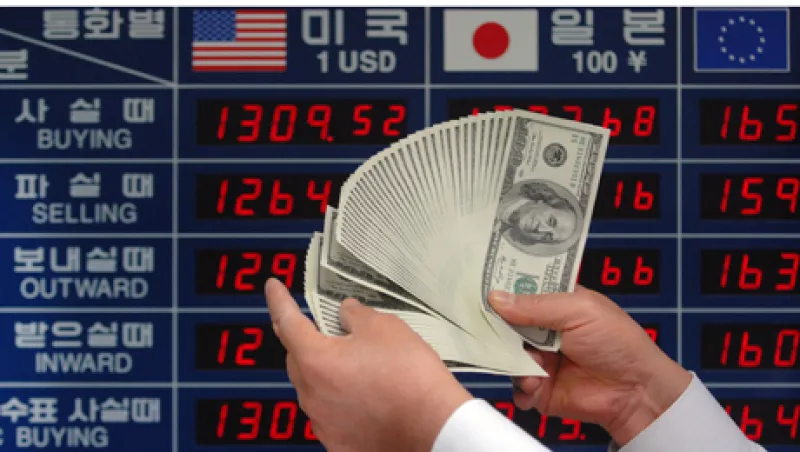Investment-style benchmarks — such as value investor, growth or quantitative — identify money management approaches in every giant investment sector with one glaring exception: the $4 trillion foreign exchange marketplace. Forget dozens of terms that money managers use to compare performance in equity and fixed-income markets. In currency markets the chief benchmark is zero. At the end of the day, traders either make money or they don’t.
The status quo needs to change, especially now, say authors Richard Levich at NYU Stern and Momtchil Pojarliev at Hathersage Capital. Investors mindful of risks and hefty costs — often a 2 percent management fee and 20 percent of excess profits — deserve to know which currency managers really deliver their money’s worth. A landscape with scarce returns adds urgency.
“If currency managers are charging a substantial management fee,” Levich says, “can you replicate their strategy with simple currency trades in most money-management tool kits?” The new paper fine-tunes their evidence that three basic ways to manage currency portfolios dominate most outcomes in currency markets, and any skilled money manager can replicate them.
Historically, currency trading has resisted style comparisons. Experts have trouble just agreeing that currency merits status as an asset class akin to stocks, bonds or real estate. Investors who own stocks, or gold, or a treasury bond can point to underlying assets. “What’s the underlying in currency?” says Levich. For that matter, where is the annual meeting? How do investors vote their proxies? Where are the financial statements?
Such is the debate that a senior currency trader at FXDD declined to tell Institutional Investor through the firm’s public relations person whether in his view currency constitutes an asset class.
Unlike more traditional asset classes, unseen and capricious forces play havoc with currency markets. “Investors get the jitters for good reason,” says Levich. Fundamental values are elusive. Central banks intervene in ways that equity markets would never tolerate. Trading systems for executing currency transactions clear through a separate set of institutions, currency traders operate with unique rules and informed monitors are sorely lacking even if they knew exactly what to look for.
Levich and Pojarliev separate currency traders into “beta grazers” who settle for returns commensurate with going risk premiums and “alpha hunters” who capitalize on market inefficiencies and behavioral bias. (Wall Street analyst Marty Liebowitz coined both terms.) Hence the provocative title of their new research paper: “Hunting for Alpha Hunters in the Currency Jungle.”
The authors report that three currency trading styles account for a whopping two thirds of the outcome: carry, trend and value. Carry strategies bet that any depreciation by higher yielding versus lower yielding currencies won’t outweigh interest differentials. As its label implies, trend strategies bet that currencies that have appreciated most will continue in the same direction. Currency traders who employ value strategies figure out which currencies are overvalued and sell them (or borrow in them) to buy undervalued currencies.
Consider two actual but undisclosed managers who produced 3.7 percent and 3.2 percent in annualized excess returns. Despite a bottom line separated only by 50 basis points, carry, trend and value lenses revealed striking differences. The three basic strategies produced nearly all of the returns that manager number one posted. That makes him a beta grazer who brings little to the table.
For manager number two the story is quite different. “His trading strategy was not related to any of those three conventional sources,” say Levich. “Essentially all of manager two’s returns are coming for reasons other than conventional strategies. He’s doing something we can’t explain by looking at three factors.” Translation: Manager two is an alpha hunter worth a premium management fee.
Does it really matter how two managers get to similar results? Indeed it does, Levich argues. “Would you as an institutional manager rather have 3 percent profit from a guy uncorrelated with what is going on than 3 percent profit from a guy that is correlated? The guy with uncorrelated risk will reduce overall error with a better chance of offering returns when everybody else isn’t.”
Hazy definitions makes differences hard to discern. “When a beta grazer disguises himself as an alpha hunter, he reaps the economic benefit of charging ‘hunting fees’ for grazing,” the co-authors report.
Levich and Pojarliev did not fire the first salvo in an ongoing debate. Writing last fall in the Journal of Portfolio Management, BlackRock directors Michael Melvin and Duncan Shand expressed skeptical views about style differentiation in currency markets. “It is fine if people want to use them but the need to be clear about the shortcomings of any particular measure,” Melvin told Institutional Investor. These words sound somewhat more conciliatory than more fiery language in JPM last fall, where he and Shand declared that “the simple use of style factors in currency investing is fraught with dangers and is of limited use as a benhmark for currency managers.”
Levich, who directed this reporter to Melvin for a countervailing view, believes history is on his side. Style analysis has been a standard practice for hedge fund selection for a long time, he says. It’s time that currency trading benchmarks caught up. Sifting beta grazers from alpha hunters using three basic strategies takes a purposeful step in that direction.





